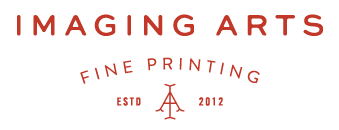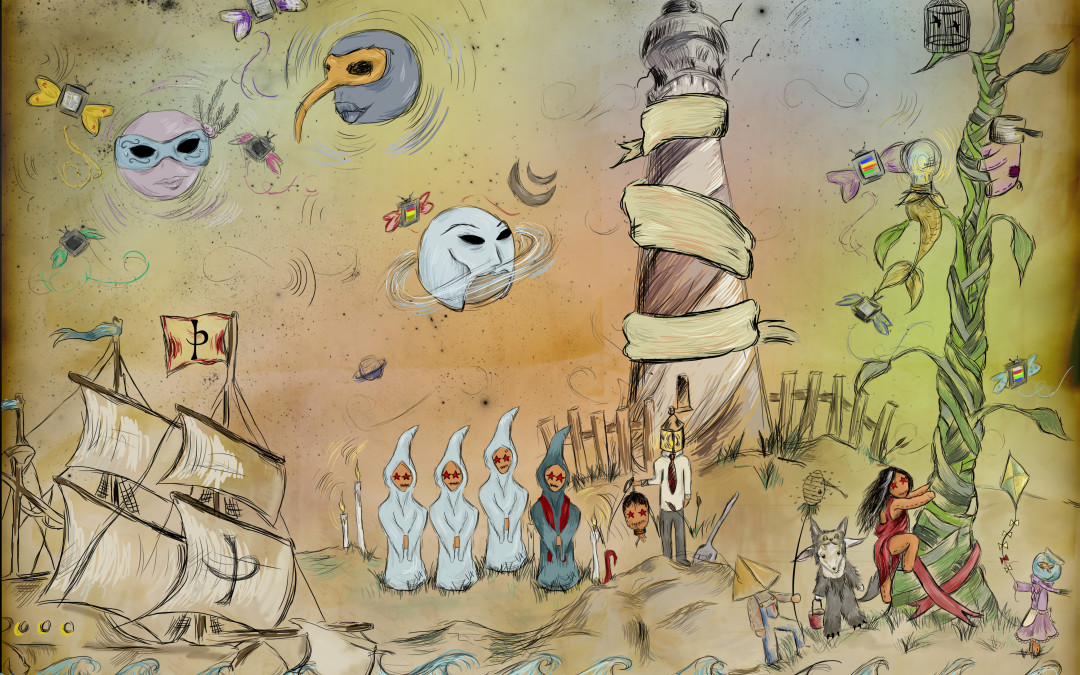Julia Royal is an artist and music lover currently finishing up school in Savannah, GA. From the first piece she sent me to print I was interested in her work and both wanted to see more and know more about it. Julia was willing to answer some of our questions about what she does and share some of her pieces. I’m happy to be able to pass these along:
Your work is beautiful. It has a great sense of texture and color that I almost feel like I can touch just by looking at it. How do you do what you do?
Thank you! Most of my illustrations, like Such Great Heights, are digital paintings. They start off as pencil drawings (sometimes photographs or a mixture of both) that I scan into my computer and with a Wacom tablet and Photoshop, digitally paint “by hand.” I’m really moved by music and whimsical narratives, and I definitely think that is evident in my work. Most of the time, I’m literally painting and designing to music, which results in some of the whipping line work you see. The color and texture, to me, mimics the many colors and textures of sound.
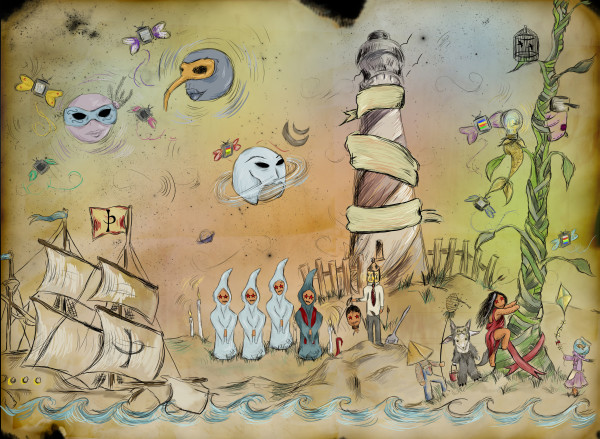
Your Starry Eyes © Julia Royal
What’s your earliest memory of creating a work of art where you realized that’s what you were doing? A time where you consciously set out to create? When did you decide you wanted to pursue that? What obstacles did you face along the way, both internal and external?
I’ve had a hand in art for as long as I can remember, and I feel like I’ve always understood what I was doing. My mother was a creative as well, and I remember making student council posters and drawings with her early on and loving it. I was always finding ways to be creative. My brother and I started our own pro-wrestling league as children, and I made logos, t-shirts, and even programs for our “events.” It’s funny that I never really actively wanted to be an artist or designer even though it was something I was always doing. It was figure skating; then dance; then wrestling; then a forensic scientist! It was almost like I didn’t realize until later that what I really loved to do could be a career as well. I decided after winning a tour artwork contest for Canadian band, Evans Blue, in 2007 that I wanted to do what I felt I was born to do.
Developing a style can be very important to many artists. How did you go about developing your style thus far?
I like to think my style is always evolving and always versatile. When I picked up digital illustration initially, I found myself trying to emulate illustrators whom I admired in the music industry (Derek Hess, Justin Kamerer), but I was never fully satisfied with the outcome because I felt it wasn’t completely me and my own aesthetic. I was a little softer; a little more romantic/fantasy/dark. My earlier work within my “Skull Phase” shows a steady progression in technique and in style although the themes are a bit static. Currently, I’ve started mixing sharp polygons with the soft painterly quality I love. I don’t know where this new direction is going to take me style-wise, but the journey has always been the best part of it all.
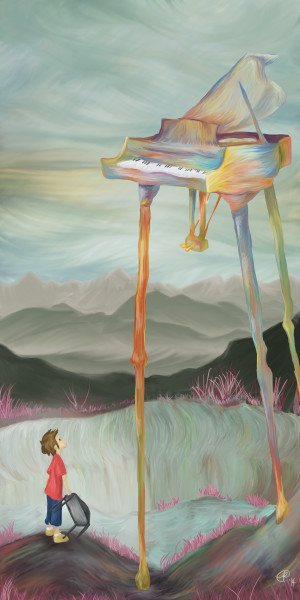
Such Great Heights © Julia Royal
Do you have any training in the art world? Would you suggest to other artists that they go to school?
I do! I’m graduating from Armstrong State University in Savannah, Georgia in May 2015, and I’m super excited about it. After finishing high school in 2005, I started going to another school in Savannah. After financial hardship, I wasn’t able to continue and had to move back home to Myrtle Beach, South Carolina. I didn’t necessarily give up on a career in art, but I felt like I had to pave my own way without a degree. I remember staying up really late tinkering around in Photoshop, making flyers for friends who were in bands and just spending time with the software. Well, after doing some kick-ass flyers and getting a little buzz after working with Evans Blue and Parabelle, I figured I’d give school another shot and make this graphic design and illustration gig “official.” I’m really glad I did, and I do suggest artists get training. I of course learned more about the software, but I learned a lot more about the psychology and history of art, and I think understanding that is just as important as the act of creating.
Your work, for me, walks a line between painting and illustration. This is a compliment as I can see you easily producing fine art work for sale but also being able to do illustration and design work. What do you see as your future in the art world?
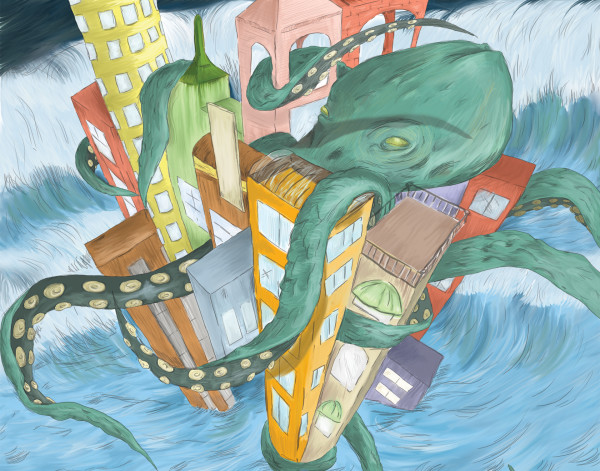
clxxi control © Julia Royal
I love that! One of my goals as an artist is to blend the world of graphic design and illustration because they work so beautifully together. I just happen to have a painterly flair as well. As far as my future, I like to say that the ultimate goal is to take over the world in a visual sense (lol). Having a love for art, music, and dance, I plan to produce graphics and illustrations in the music industry. It’s where I get most of my inspiration so I feel it’s only fitting.
Color is a big deal to me, and I would say it’s likely the same for many people. How do you decide what colors you’re going to use? A photographer friend of mine was telling me of his observations that the type of music he’s listening to while editing appears to influence the color temperature of his editing. Have you ever experienced such a thing in your work?
Color is everything. It sets a mood; it’s the tone; it speaks so much. Like your friend, I find music does impact the color choices I make.
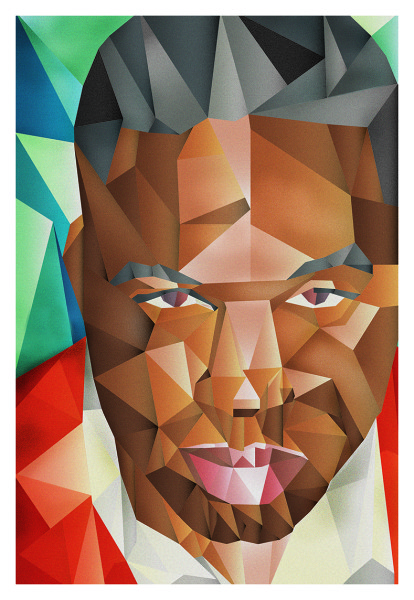
Adam Portrait © Julia Royal
If you were to choose one piece to show us that you think really represents who you are as an artist at this particular point in time which would it be? Why do you choose this one?
Patagonia I: Dance Above the Plains. It encompasses my intentions as an artist as well as my love for the arts. It’s a visual interpretation of a song called “Patagonia” by Palms. The many layers and textures of the piece represent different sounds, voices, and instruments in the song. The containment of the illustration speaks to a song’s literal containment of 3-5 minutes, but I know for me, many leave that containment and have a long-term importance and that’s why the illustration is spilling out into the white space. I also love ambiguity of space and time, making the viewer feel like they’re everywhere and nowhere at the same time. The piece is really graphic, and the aesthetic is one that I’ve sort of adopted as my own visual identity.
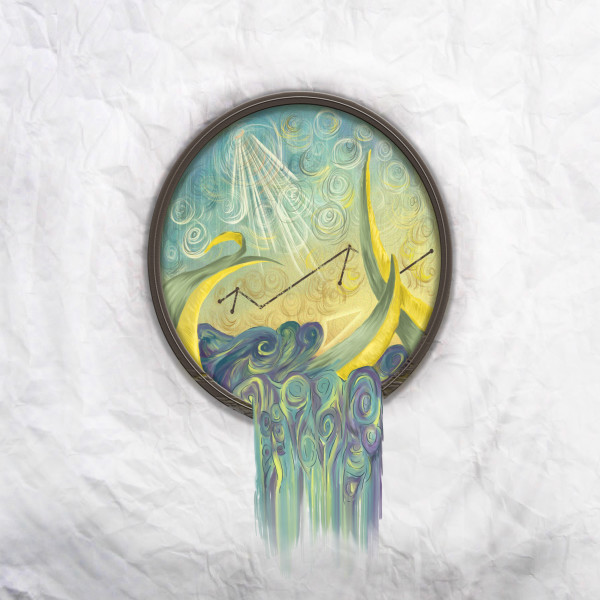
Patagonia 1 © Julia Royal
What role has making prints of your work played in your life as an artist?
It’s definitely something I need to do more of, especially being a digital artist. There’s something about the physical presence of my work that I absolutely love. It’s exciting, loud, and final. It feels like accomplishment and exposure.
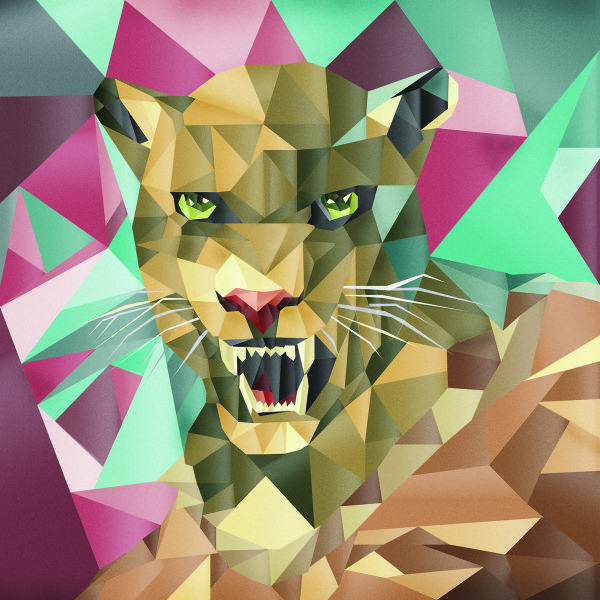
Macht © Julia Royal
If people want to see more of your work where can they do so?
If anyone is interested in more of my work, JULIAROYAL.COM is where you want to go!Thanks Julia!
